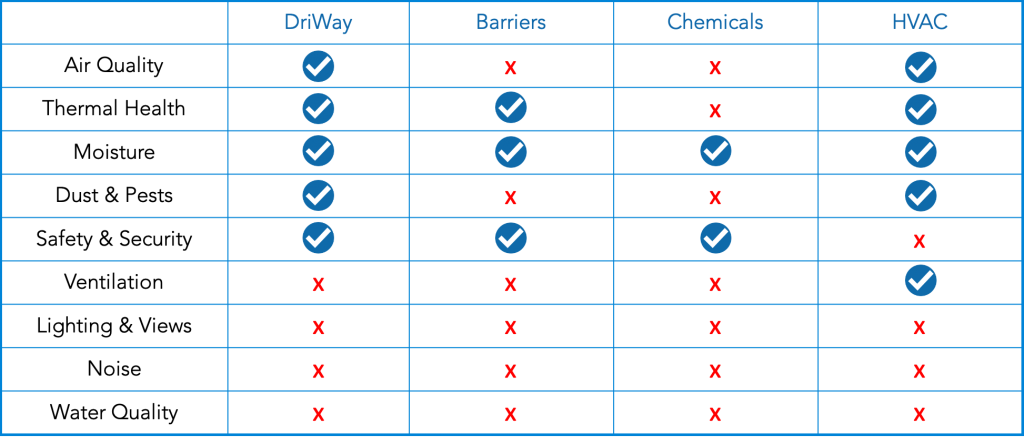Solutions
THE INVASIVE Groundwater PROBLEM
A MULTI-BILLION DOLLAR PROBLEM
Invasive groundwater and associated damage costs billions of U.S. dollars in building remediation costs incurred by real estate owners and tenants.
Capillary Action
Structural Damage
Health Hazards
Moisture and high humidity accumulation often result in mold, insect infestations, and unpleasant odors.
Costly Repairs
Non-permanent and expensive remediation methods do not solve the problem, only temporarily treat the symptoms

Chemicals : Potentially harmful chemicals can add potential health hazards to building occupants and are ineffective after time

Barriers: Waterproofing barriers are expensive and deteriorate over time
Nine Foundations of a Healthy Building


Benefits
Cost reduction
Other mitigation measures do not address the core problem, increase inhabitable space utilization or preserve asset value
Healthier Buildings Means Healthier Occupants
Healthier buildings means Healthier occupants reduction of moisture-related hazards like mold and infestations improves indoor air quality, fostering better respiratory health;
Improved Structural Integrity
Removing invasive groundwater returns a building’s structure to its original building specifications
Carbon Footprint
Reduces a building’s carbon footprint by decreasing electricity and other mitigation costs to address invasive groundwater symptoms like humidity and infestations


